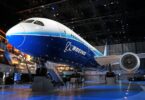The maritime sector is one area that produces high carbon dioxide emissions and shipping is a major contributor to this. In this article. Andrew Spiteri shows us how Air Lubrication Systems (ASL) can help to reduce the drag on ships, lowering fuel costs and emissions alongside a range of other benefits.
Could you tell us about yourself and your background?
My name is Andrew Spiteri and I am a marine engineer working on a European-funded project called Retrofit 55 at Liverpool John Moores University (LJMU), where we are looking at retrofitting different technologies to ships and their interactions with each other.
The aim is to reduce greenhouse gas emissions by 35% through retrofitting energy-saving solutions. My original background is in industrial and manufacturing engineering from the University of Malta. I then moved into the field of marine engineering when I did my master’s at Liverpool John Moores University. Being from an island country it was always a dream for me to work in the maritime industry.
From then I furthered my studies by completing a PhD in Air Lubrication Systems (ALS). My research focused on trying to understand the scaling effects on ALS when going from model to full-size testing. I also focused on the optimal injection rates for maximum drag reduction and how these are affected by the operation conditions of vessels.
What are Air Lubrication Systems (ALS) and how do they work?
ALS works on the principle of injecting air into the boundary layer of the ship to alter the flow near the hull which in turn reduces drag. Air can be introduced into the boundary layer in different ways, it could be a whole layer of air, bubbles or even a cavity.
This introduction of air into the boundary layer alters the flow favourably by reducing the turbulence and wall shear forces. This results in a reduction in the viscous drag reduction on ships. Funnily enough, this technology exists in nature, penguins fill their feathers with air and when they need an extra burst of speed to jump out of the water, they release that air around them!
What are the potential benefits of ALS technology?
The original benefits of this technology were its drag reduction effect and its savings which typically are in the range of 5 -12 % net savings. However, focus is currently being put on the positive effect that ALS has on onboard vibration reduction, noise reduction and reduction in bio-fouling growth. With new regulations, more and more focus is being put on noise reduction and how this can be reduced. An interesting fact is that when ALS was originally designed it was to reduce the underwater noise for army ships.
What are the main challenges?
I think that the main challenges for ALS are those that are relatable to any other energy-efficient technology, which is scepticism and a lack of trust/knowledge in the technology. As the technology becomes more and more popular the interest and uptake will increase.
Additionally, there are technologies that produce the same amount of savings but are not as intrusive as ALS when it comes to installations. With the added benefit of vibration reduction, noise reduction and the reduction of bio-fouling growth, ALS should be looked at as a holistic solution rather than just for emission savings.
ALS is not a silver bullet, but I believe, it will be a major player in the path of maritime decarbonization. As technologies are evolving and becoming more and more efficient, I see that there will be a better acceptance of the technology with ALS giving better results.
What types of vessels are air lubrication systems particularly suitable?
ALS is best suited for vessels with a large flat bottom in a shallow draft, with that I mean, this is the best configuration for optimal results. Having said that ALS has been installed on different ship hulls and a net reduction has been observed! Air cavities are also being installed on smaller, faster crafts to increase the range of electric vehicles! The technology can also be retrofitted to older vessels.
How can we encourage the maritime industry to adopt air lubrication technology?
I think it’s all down to awareness, information, and financing. Many shipowners and operators are not familiar with air lubrication technology, or they are not aware of the full extent of its benefits. Industry associations, governments, financial institutions, and technology providers can all play a role in raising awareness of air lubrication technology and its potential to help the maritime industry achieve its decarbonization goals.
Additionally, continued research and development will help to improve the performance and reduce the cost of air lubrication systems, making them more attractive to shipowners.
Which companies and research institutions are at the forefront?
Liverpool John Moores University, Delft University, Silverstream, Armada and Oceanglide I believe are at the current forefront in ALS for shipping. There is also Pascal who is working with air cavities on smaller and faster crafts. However, this is not a conclusive list, as ALS research is becoming more and more popular, so I am sure there are more institutions and companies such as Shipglide who will be on the up and up.
Where do you see the future of air lubrication systems?
Whilst I believe that ALS is a good solution for maritime decarbonization, I think that for ALS to become a true leader in energy-efficient technology the next step is to optimize the solutions to constantly provide double-digit savings. More research must be done on the other added benefits as mentioned before. This will make ALS a more holistic solution. The use of ALS with other technologies such as coatings or underwater wings should be studied so that the addition of both technologies can result in a bigger outcome. Also, I believe it would be interesting for new builds to research or investigate how ships can be optimized for ALS not ALS optimised for ships.








